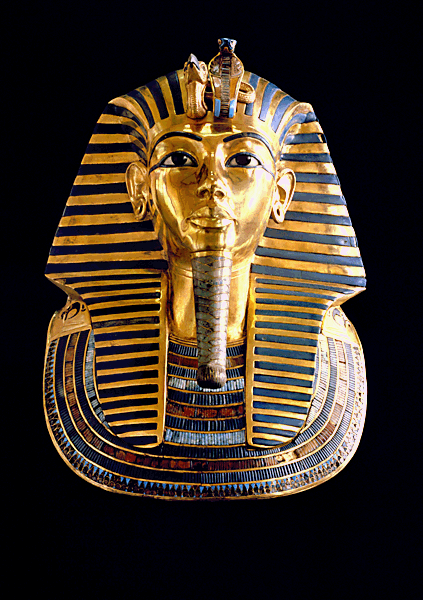King Tut’s “Real” Appearance
October 22, 2014
The first “virtual autopsy” of King Tutankhamun, one of the most famous pharaohs of ancient Egypt, has produced surprising findings about his appearance as well as cast doubt on a recent popular theory about his death. The virtual autopsy is actually a three-dimensional, life-sized image of the king based on some 2,000 CT scans of his mummy. An international team of researchers found that in life Tut had a clubfoot, a severe overbite (often called buck teeth), and a girlish body. The researchers also concluded that it is highly unlikely that Tut died in a chariot accident, as some scientists have recently suggested.
Tut ruled Egypt from about 1332 B.C. until his sudden death at about age 19 in around 1322 B.C. He was actually a fairly unimportant king. But he became an international sensation in 1922, after the British archaeologist Howard Carter discovered his tomb. The four-room tomb, the only tomb of an ancient Egyptian king to be discovered almost completely undamaged, still contained most of its treasures. Inside were more than 5,000 objects, including many beautiful carved and gold-covered items. The death, five months later, of Carter’s patron Lord Carnarvon inspired the legend that a deadly curse protected the tomb.

Gold funerary mask of Tutankhamun (© SuperStock)
The autopsy team reported that Tut, like some of his male ancestors, had wide hips and enlarged breasts, possibly due to an inherited hormonal imbalance. The autopsy also confirmed earlier genetic findings that Tut’s parents were siblings. Marriage between royal family members was common in ancient Egypt as a way to keep the bloodline pure. However, the practice contributed to physical weakness and illnesses.
The scientists also discovered that Tut had been born with a severely deformed left foot and had developed a rare and painful bone disease called Kohler’s disease in adolescence. In fact, some 130 walking sticks were found in Tut’s tomb. Some scientists had theorized that the sticks were symbols of the king’s power.
Also confirmed were earlier discoveries that Tut had suffered from malaria and had broken a leg before he died. The badly broken leg showed no signs of healing and may possibly have contributed to his death.
The new findings challenge the idea that Tut died in a chariot accident. “The evaluation of the CT scans clearly points out that it is highly unlikely that he was riding a chariot due to his foot disease and his general bad health,” Albert Zink of the Institute for Mummies and the Iceman in Bolzano, Italy, told HuffPost. “Therefore it is unlikely that he had an accident while riding the chariot.”
Additional World Book articles:


